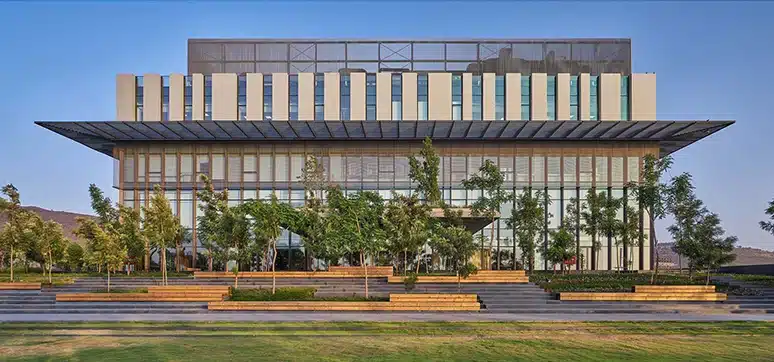What is the size of the present architectural glass market globally and in India?

Suhel Kachwala: The global market for performance glass used in the façade and fenestration industry is expected to grow by a good value and roughly the market is projected to grow at a CAGR of 4.8% from 2023 to 2032.
Tariq Kachwala: The growth of the Indian architectural glass market is estimated to be around CAGR 7.5% for 2023-2027.
What are the driving factors of the architectural glass industry?
Suhel Kachwala: The increasing demand for energy-efficient buildings is a major driver of the growth of the performance glass market. Performance glass can help to reduce energy consumption by up to 50% by controlling heat gain and loss.
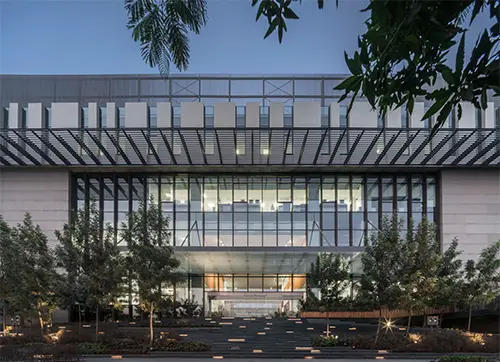
Additionally, performance glass can improve the thermal comfort of buildings, which can lead to increased productivity and reduced absenteeism. The growing popularity of smart glass is another factor that is driving the growth of the market. Smart glass can change its opacity or tint in response to external stimuli, such as sunlight or temperature. This can help to reduce glare, improve privacy, and save energy.
Tariq Kachwala: The growth of the architectural glass industry is driven by several factors, including:
- Growing construction industry: Rapid urbanisation, rising disposable incomes, and government initiatives are boosting residential and commercial construction, leading to increased demand for architectural glass.
- Increased awareness of energy efficiency: Sustainable construction practices are gaining traction, driving demand for energy-efficient glass solutions like low-emissivity and solar control glass.
- Evolving design trends: Architects are increasingly incorporating glass into their designs for its aesthetic and functional benefits, further increasing its demand.
- Government support: Government initiatives like “Make in India” and “Smart Cities Mission” are promoting domestic glass production and creating favourable conditions for market growth.
What are the Technological Evolutions in the architectural glass industry?
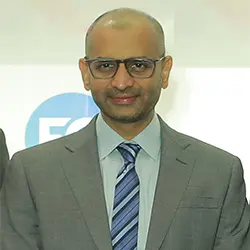
Tariq Kachwala: The architectural glass industry is undergoing several technological advancements, including:
- Bird-friendly glass: A high-rise building with bird-friendly glass can help to avoid bird collisions, where we can prevent all natural things saved for a better future.
- Smart glass: Glass that can change its properties (opacity, solar control) based on external stimuli like light and heat.
- Self-cleaning glass: Glass with coatings that repel dirt and water, reducing maintenance requirements.
- BIPV (Building Integrated Photovoltaics): Glass integrated with solar cells to generate electricity.
- Biomimetic glass: Glass with self- healing properties inspired by nature.
- Nanotechnology: Nanotechnology is being used to develop new glass materials with enhanced properties like strength, durability, and thermal insulation.
How do you envision the future market for performance glass? What are the factors influencing the growth of the performance glass market?
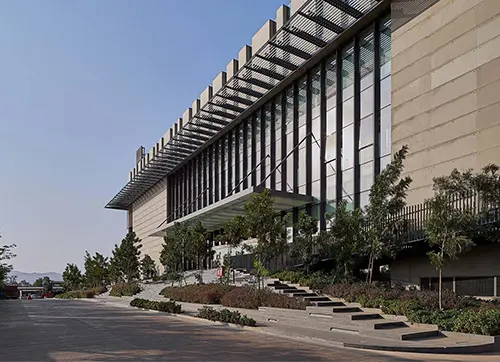
Suhel Kachwala: The growth of the performance glass market is expected to continue in the next decade, with a CAGR of 4.3% from 2033 to 2043. The increasing demand for sustainable buildings is expected to drive the growth of the market. Performance glass is a key component of sustainable buildings, as it can help to reduce energy consumption and improve the environmental performance of buildings. The development of new and innovative performance glass technologies is also expected to drive the growth of the market. These new technologies include self-cleaning glass, self-healing glass, and biomimetic glass.
In addition to the factors mentioned above, the following trends are also expected to drive the growth of the performance glass market in the next 10 years:
- The increasing urbanisation: The world’s population is expected to reach 9.7 billion by 2050, with most of the growth occurring in urban areas. This will lead to an increase in the demand for new buildings, which will in turn drive the demand for performance glass.
- The growing awareness of the health and environmental benefits of performance glass: Performance glass can help to improve indoor air quality, reduce noise pollution, and block harmful UV rays. This is leading to an increase in awareness of the health and environmental benefits of performance glass, which is driving demand for these products.
- The increasing affordability of performance glass: The cost of performance glass has been declining in recent years, making it more affordable for a wider range of consumers. This is expected to continue to drive the growth of the market.
- The future market for performance glass is very promising. The increasing demand for energy-efficient and sustainable buildings, the growing popularity of smart glass, and the development of new and innovative performance glass technologies are all expected to drive the growth of the market in the next 10 years.
What is your forecast for the industry for the next seven years, that is for 2030?
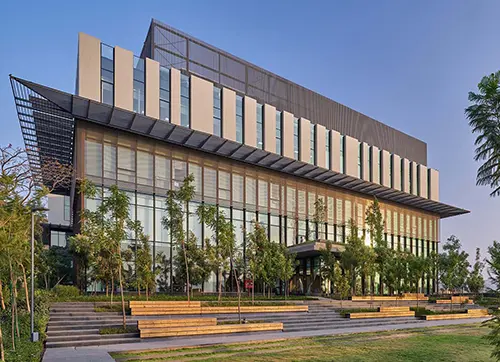
Tariq Kachwala: Based on current trends and expert opinions, the architectural glass industry is expected to continue to grow steadily in the coming years. The market value is expected to grow by 2030 with a CAGR of 7-8%. Key trends driving this growth include:
- Increasing demand for high-performance glass (energy-efficient, soundproof, etc.).
- Growing adoption of smart glass and other innovative technologies.
- Rising popularity of sustainable building practices, driving demand for green glass solutions.
- Increasing government support for the glass industry.
What are the evolutions in architectural/performance glass technologies? How do you envision the glass façades of 2050?
Tariq Kachwala: Based on current trends and technological advancements, we envision the glass façades of 2050 to be:
- Highly integrated and intelligent Glass façades will seamlessly integrate sensors, displays, and other technologies, enabling them to react to environmental conditions and user preferences.
- Sustainable and energy-efficient: Glass will be a key component of energy-neutral and even energy-positive buildings, generating their own energy through solar cells and other technologies.
- Bio-inspired and self-healing: Glass façades will be inspired by nature, with self-cleaning and self-healing capabilities.
- Personalised and interactive: Glass will be used to create personalised and interactive experiences for users, such as adjusting lighting and temperature based on individual preferences.
NET ZERO & LOW CARBON
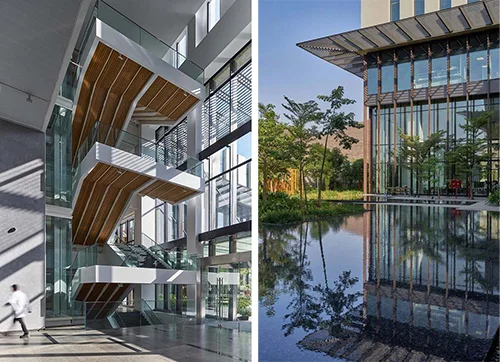
Our pledge to achieve carbon neutrality by 2050 is deeply embedded in our extensive track record of minimising environmental impact.
This commitment is intricately connected to our aspiration to furnish customers with effective solutions for their own decarbonization journey, thereby assisting them in diminishing their environmental footprint. Our pursuit of net zero carbon emissions stands as a tangible expression of our overarching purpose: to contribute to the betterment of the world
